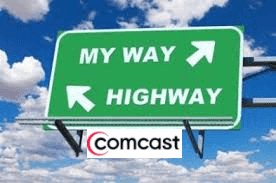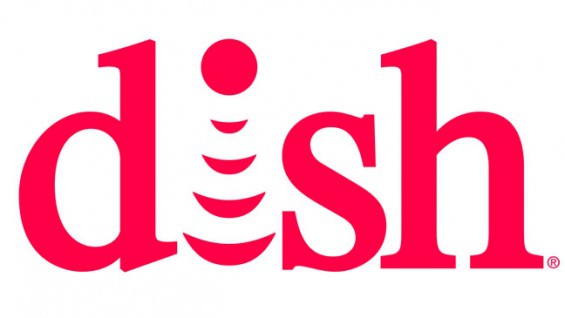 Comcast Internet-only customers looking for speeds up to 100Mbps will pay Comcast an unprecedented $88.95 a month for a package containing the company’s Blast! broadband service with a rented cable modem.
Comcast Internet-only customers looking for speeds up to 100Mbps will pay Comcast an unprecedented $88.95 a month for a package containing the company’s Blast! broadband service with a rented cable modem.
The company has begun informing subscribers of the first of its 2015 rate increases that took effect in some areas on Jan. 1.
“We have worked very hard to hold down price adjustments, and there are no price changes for our Limited Basic ($16.10), Digital Preferred ($85.90) or Internet Essentials ($9.95) services,” said Bob Grove, Comcast’s vice president of public relations. “While we continue making investments in our network and technology to give customers more for their money, including more video across platforms, better experiences like X1 and faster Internet service, we periodically need to adjust prices due to increases we incur in programming, business costs and new technology. On average, nationally, the customer bill will increase by 3.4 percent.”
Some will pay more than others. Here is a sample:
- Customers with DVR service face a $2 rate hike for the monthly DVR service charge, which now stands at $10 a month;
- Digital Premier, which includes an assortment of premium movie channels, is rising from $131.75 to $140.35;
- The hourly service charge for service calls is increasing from $33.80 to $35.80;
- Each extra cable outlet in your home will cost a one time service fee of $33.20, up from $32.75;
- Any pre-existing outlet in your home will now be charged a one time activation fee of $22.95, up from $22.05;
- Service upgrades that require an in-home visit will be charged $28.45, an increase from $26.30;
- The in-home wiring service protection plan that covers you in case of an inside cable wiring or service deterioration problem will see a price increase of $1 to $4.95 a month. Customers without the plan will now pay $35.80 an hour for service calls.
Cable television customers face an increase of more than 100% for the company’s Broadcast TV surcharge introduced in 2013. In most areas, the fee is rising from $1.50 per month to $3.25. A previously announced $2 increase in modem rental charges will raise the cost of using Comcast-supplied equipment including Comcast’s Gateway to $10 a month.
Comcast is also introducing a new compulsory regional sports network surcharge of $1 a month for all XFINITY TV packages starting with Digital Starter and higher tiers and XFINITY 450 Latino.
Customers with analog-only televisions using a DTA converter box to handle digital cable television channels on these older sets face an even more dramatic price hike. Customers that used to pay as little as $0.50 for Digital Adapter Additional Outlet Service will now pay $2.99 a month.
Premium channels such as HBO have seen price reductions, possibly in response to declining subscriber numbers. HBO drops to $15 a month and all other premiums decrease to $12 a month.
Comcast customers looking for the biggest bang for their buck should consider bundled service packages which discount Internet, television, and telephone service. Current customers should also consider letting Comcast know they are shopping the competition for a better deal. Ask them to lower your rates if they want you to stay.


 Subscribe
Subscribe
 DISH’s plans to stream video content over the Internet could one day also include 4K programming, but viewers are likely to run smack into usage caps and usage billing that ISPs are using to deter online video from gutting cable television revenue as well as further monetizing already highly profitable broadband.
DISH’s plans to stream video content over the Internet could one day also include 4K programming, but viewers are likely to run smack into usage caps and usage billing that ISPs are using to deter online video from gutting cable television revenue as well as further monetizing already highly profitable broadband.


 New York Gov. Andrew Cuomo has set a goal that every resident of New York State should have access to at least 100Mbps broadband no later than 2018.
New York Gov. Andrew Cuomo has set a goal that every resident of New York State should have access to at least 100Mbps broadband no later than 2018.
 That must come as a relief for Verizon. The state’s largest phone company has petitioned state officials in the past for a gradual mothballing of New York’s rural landline network in favor of switching customers to wireless voice and broadband over Verizon’s cellular network. Theoretically, taxpayers could end up subsidizing the demise of rural New York landlines and DSL if Verizon seeks money from the rural broadband fund to expand its wireless tower network in rural New York. Time Warner Cable almost certainly will also seek more funding, probably in excess of the average $1,264 paid to the cable company for each of the 4,114 additional connections it agreed to complete during an earlier round of funding.
That must come as a relief for Verizon. The state’s largest phone company has petitioned state officials in the past for a gradual mothballing of New York’s rural landline network in favor of switching customers to wireless voice and broadband over Verizon’s cellular network. Theoretically, taxpayers could end up subsidizing the demise of rural New York landlines and DSL if Verizon seeks money from the rural broadband fund to expand its wireless tower network in rural New York. Time Warner Cable almost certainly will also seek more funding, probably in excess of the average $1,264 paid to the cable company for each of the 4,114 additional connections it agreed to complete during an earlier round of funding.